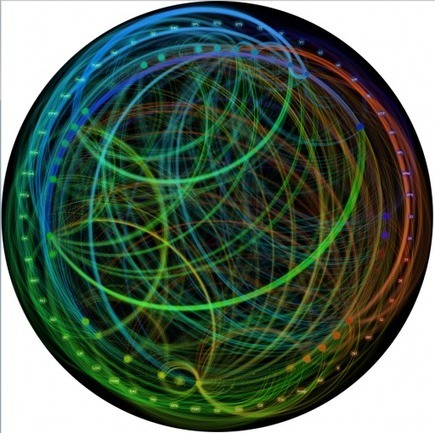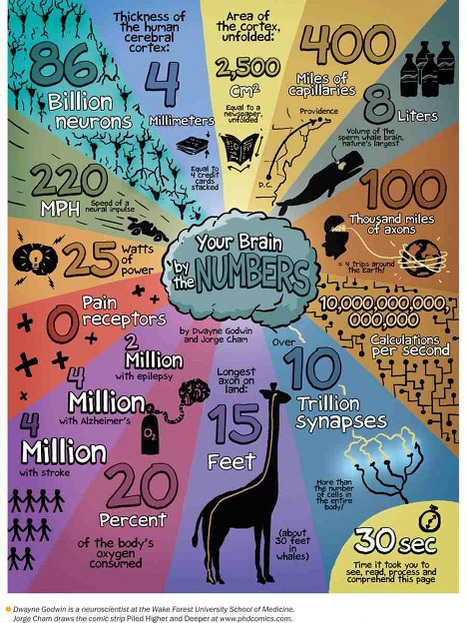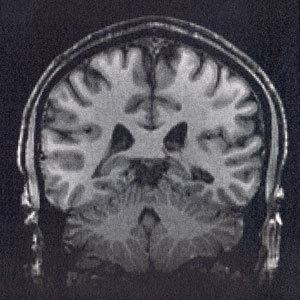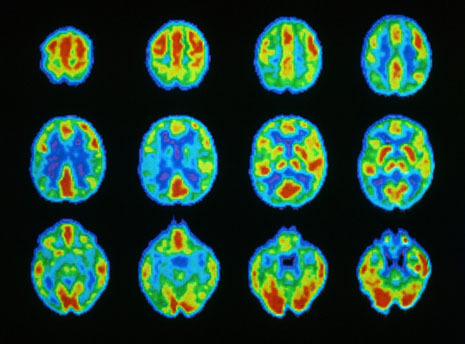Get Started for FREE
Sign up with Facebook Sign up with X
I don't have a Facebook or a X account


 Your new post is loading... Your new post is loading...
 Your new post is loading... Your new post is loading...
“We cannot live only for ourselves. A thousand fibers connect us with our fellow men; and among those fibers, as sympathetic threads, our actions run as causes, and they come back to us as effects.” -Herman Melville Connection.
“empathy,” the simple innate ability to “know what it’s like,” to actually understand. But what is it really? How does it work, and where does it come from?
The biological basis for empathy lies, like all emotions, in the brain. It might be more appropriate to substitute “synaptic” in lieu of “sympathetic” in Melville’s aforementioned quote, as empathy goes all the way down to the molecular level, generated by special brain cells nicknamed mirror neurons. These neurons were originally referred to as “monkey see, monkey do” neurons after their discovery by a team of researchers at the University of Parma, Italy.
by Matthew Garrett Via Edwin Rutsch
My BBC Future column from a few days ago. The original is here. I’m donating the fee from this article to Wikipedia. Read the column and it should be obvious why. Perhaps you should too: dona...
Sakis Koukouvis's insight:
Our minds are made up just as much by the people and tools around us as they are by the brain cells inside our skull.
First computer model to produce complex behaviour performs almost as well as humans at simple number tasks.
IBM is developing a cognitive computing program under a DARPA program and just hit a major high.
When spirits speak through the writing hands of Brazilian mediums, there is a drop in activity in parts of the brain.
Scientists may have figured out the mystery of falling head over heels and why love can make even the most levelheaded of people giddy, foolish and ridiculous.
What is nine plus six, plus eight? You may not realise it, but you already know the answer. It seems that we unconsciously perform more complicated feats of reasoning than previously thought – including reading and basic mathematics.
Neuroscientists claim to have communicated with a patient who appears to be in a vegetative state by asking him questions and studying fMRI images of his brain directly afterward.
Many children spontaneously report memories of 'past lives'. For believers, this is evidence for reincarnation; for others, it's a psychological oddity. But what happens when they grow up?
BRAIN POWER: From Neurons to Networks is a 10-minute film and accompanying TED Book (ted.com/tedbooks) from award-winning Director Tiffany Shlain and her team at The Moxie Institute. Based on new research on how to best nurture children's brains from Harvard University's Center on the Developing Child and University of Washington's I-LABS, the film explores the parallels between a child's brain development and the development of the global brain of Internet, offering insights into the best ways to shape both. Made through a new crowd-sourcing creativity process the Moxie team calls "Cloud Filmmaking," Brain Power was created by putting into action the very ideas that the film is exploring: the connections between neurons, networks, and people around the world.
Scientists have located a specific set of neurons that indicate how time passes, confirming that the brain plays an essential role in how we experience the passage of time. |
".....About half a dozen PET studies of speech perception had been published, all in top journals, and David tried to synthesize them, essentially by comparing which parts of the brain were said to be active during the processing of speech in each of the studies. What he found, shockingly, was that there was virtually no agreement. Every new study had published with great fanfare, but collectively they were so inconsistent they seemed to add up to nothing. It was like six different witnesses describing a crime in six different ways.
The sort of short, simple explanations of complex brain functions that often make for good headlines rarely turn out to be true. Via Lou Salza
Sakis Koukouvis's insight:
Sensitivity to emotion in speech prosody derives from our capacity to process music, supporting the idea of an evolutionary link between musical and language domains in the brain.
Whether you are reading in Chinese or French, the same brain areas light up.
Not the only gene that separates us from other apes, but an interesting one.
How do fast-paced video games affect the brain? Step into the lab with cognitive researcher Daphne Bavelier to hear surprising news about how video games, even action-packed shooter games, can help us learn, focus and, fascinatingly, multitask. 
Matija Sprogar's curator insight,
March 7, 2014 7:39 PM
Yeah, but just leap into the first multiplayer Mario platformer set in a 3D world! Play as Mario, Luigi, Princess Peach, and Toad—each with their own special skills—in the all-new Sprixie Kingdom. At http://s.shr.lc/19obdCc 
Sara SJagini's curator insight,
May 5, 2014 7:22 AM
Action game players show better visual and attention skills than those who do not play video games

Susan Gingras Fitzell's curator insight,
January 13, 2013 10:30 AM
How we use our brains, how we keep our brains healthy, how we learn and critically think, all have significant impact on our career success. 
Susan Gingras Fitzell's curator insight,
January 13, 2013 10:32 AM
How we use our brains, how we keep our brains healthy, how we learn and critically think, all have significant impact on our school success.
Have you ever wondered what your brain sounds like when it is thinking? Download the sound files with brain music
When is a cigar more than a cigar? A team of Dutch scientists believe they may have the answer. By using an fMRI scanner to study the brain activity of eight bilingual volunteers as they listened to the names of four animals spoken in English—bull, horse, shark and duck—the scientists were able to locate the specific part of the brain where the meanings of words are created. 
Doug Breitbart's curator insight,
March 4, 2013 2:52 PM
I know this might seem a bit non-linear; however, is there analgous applicability of this finding to the global networked collective mind or intelligence that is emerging. Are there centers of concentrated semantic focus and meaning, on a meme or conceptual basis, that by virtue of their authority, concentration, weight of influence, and clarity of concurrence and definition, provide the center of gravity for the rest of the collective on a global basis?
Functional magnetic resonance imaging shows what happens in the brain during improvisation.Rappers making up rhymes on the fly while in a brain scanner have provided an insight into the creative process.
Struggling to solve today's sudoku? Is your tried and tested method hitting a brick wall and you feel like you are going around in circles? Then new research from Nature Scientific Reports might make you feel a bit better. You might not necessarily be stuck... perhaps you are just in a patch of transient chaos on your way to the solution.
Could we copy a specific brain or transfer our minds to another device?
The Sentis Brain Animation Series takes you on a tour of the brain through a series of short and sharp animations. The second in the series describes the three regions of the brain and how they interact as we experience the world. |
































Smell the Future